|
Open/GL |
Non GL |
|
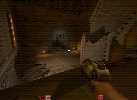
|
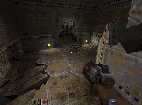
|
|
Q2 - 3Dfx/GL 640x480
|
Q2 - soft 512x384
|
|
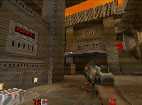
|
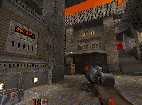
|
|
Q2 - 3Dfx/GL 640x480
|
Q2 - soft 512x384
|
|
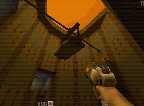
|
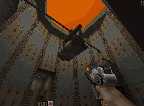
|
|
Q2 - 3Dfx/GL 640x480
|
Q2 - soft 640x480
|
|
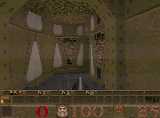
|

|
|
Q1 - GL
640x480 |
Q1 - soft
640x400 |
|
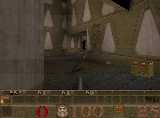
|

|
|
Q1 - GL
640x480 |
Q1 - soft
640x400 |
|
Quake and QuakeII are two of the biggest games of all time,
easily eclipsing their predecessor, and technological parent - Doom.
Quake
First available on the x86/DOS platform, Quake is now on many systems
- N64, Playstation, Win95, SGI, and more. There are several Linux versions
available.
A SVGAlib version uses the console and displays fullscreen graphics,
this is the format PC users will be familiar with - it is exactly the same
as the DOS version. Secondly, the X11 version runs Quake in a window on
the X desktop. This version obviously needs more resources than SVGAlib
based, but has the advantage of being a crisper output, and resizable display.
Both the above versions are identical to the original in every way
- and hence use only 256, or pseudo color displays.
There are two more versions though, one is Mesa/Quake. This uses the
freely available OpenGL 'replacement'
library; Mesa, to render the graphics. This results in a far better
screen quality than the original, with lighting effects, transparency,
and more. This version is useable by any machine - but uses a tremendous
amount of cpu power (be warned).
The final version is Mesa3Dfx Quake. This uses the power of 3Dfx's
Voodoo chipset on compatible cards (eg Monster3d, Canopus Pure3d, Obsidian
cards, etc) to render the scene very fast, the graphics are in 16bit colour,
with lighting, transparency and more reproduced perfectly and smoothly.
If you have a 3Dfx card then get Mesa, and use this version.
All of the version support full sound and CD audio - as long as you
have the correct hardware of course :) The Creative SB16 and Gravis GUS-MAX
are reccomended cards to use.
QuakeII
The highly successful follow up to Quake, Q2 is more advanced than
the original, and is seen at its best only when powered by a 3d accelerator.
There are three versions that are used in the Q2 executable - Soft, Soft/X,
and GL based rendering.
Soft based rendering uses the standard SVGAlib console (ver 1.2.10+
of SVGAlib must be used). Note that SVGAlib does not support many higher
resolutions of really new cards - you may be stuck to 320x240.
Soft/X uses X11 and the MIT-Shm extension to display graphics, a 8bit
(256) or 16bit (65536) colour display is required.
GL based rendering requires the use of the Mesa graphics library to
provide a OpenGL-like interface to the graphics system. In this case, only
the Linux-GLIDE system is supported. Hence only 3DFX cards can be used
to run the GL renderer.
*Glide is a low level API for 3DFX cards that is available on DOS,
Win95, Be-OS, Mac-OS, Linux, and I belive on DEC-Alpha.
Of course, the GL-based solution provides the best quality and speed,
reducing the burden on the cpu.
Software powered Quake (1), and possibly Linux GL/Quake, is at:
ftp://ftp.idsoftware.com/idstuff/unsup
Linux OpenGL accelerated Quake II can probably be downloaded from the
same place. You will need Mesa,
and the 3Dfx GLiDE library. GLiDE can be downloaded from 3Dfx:
http://www.3dfx.com/software/download_glide.html
Remember, you can only use these with a 3Dfx powered card. |

